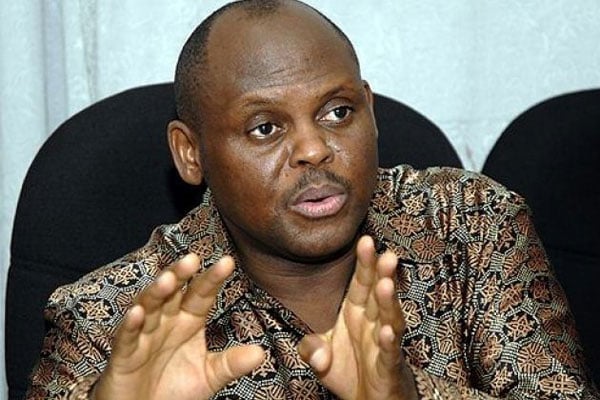Scientists in countdown to Uganda’s first satellite

Uganda’s Space engineers at the centre of developing the satellite in Japan. A satellite is an artificial or man made object, which can be placed or deployed in orbit around the earth or another planet to collect information for communication. PHOTO/COURTESY
What you need to know:
Three Ugandan graduate engineers were successfully enrolled by Japan among them; Bonny Omara, Edgar Mujunu, and Derrick Tebuseke to undertake a cause that was envisaged to last for a period of two and half years.
Uganda has joined 12 African countries in the space technology race in a very big way by propping into orbit the first satellite dubbed – PearlAfricaSat-1 with expected launch in August 2022.
The PearlAfricaSat -1 is the latest mission from the Joint Global Multi- Nation Birds Satellite project, a multinational programme to help countries build their first satellite.
Numerous countries from across the globe including; Africa, Asia, and South America have benefitted from this programme.
The initiative to build Uganda’s first satellite began in October 2019, as part of a directive by President Museveni to the Ministry of Science, Technology, and Innovation to put in place a National Space Agency and Institute.
The collaborative research agreement was signed with Kyushu Institute of Technology (Kyutech), Japan to enroll and upskill three graduate engineers to design, build, test, and launch the first satellite for Uganda.
Consequently, three Ugandan graduate engineers were successfully enrolled by Japan among them; Bonny Omara, Edgar Mujunu, and Derrick Tebuseke to undertake a cause that was envisaged to last for a period of two and half years.
This came at the backdrop of a major Shs7 billion investment into science, technology and research.
Japan, a first world country with a long history in space technology contributed to Uganda’s first efforts to acquire Mpooma satellite earth station in Mukono district that was designed and built by a Japanese Nippon Electric company in 1978.
A satellite is an artificial or man made object, which can be placed or deployed in orbit around the earth or another planet to collect information for communication.
Satellites generally consist of earth observation or remote sensing satellites, communication satellites, navigation and positioning satellites, and those for space exploration.
For Uganda’s case, Bonny Omara, a space scientist currently based in Japan, says Uganda is launching the first earth observation satellite into orbit. This means the country shall mark an end on dependency syndrome on foreign countries for satellite data which has been costing the country huge sums of money while compromising security and secrecy of the country.
According to Omara, the core missions for PearlAfricaSat-1 are a multispectral camera payload which is the first to be implemented amongst all satellites launched by African countries.
The Multispectral Camera mission will provide not less than 20 metre resolution images for the country to facilitate analysis of water quality, soil fertility, and land use and cover.
The satellite is expected to play a key role in the oil and gas operation by closely monitoring the East African crude oil pipeline, making accurate weather forecasts by collecting remote sensor data for predicting the occurrences of landslides, drought and infestation of pests and diseases.
Planned launch
A flight model- which is the actual satellite to be sent in space is in advanced stages of development. The satellite will undergo space environment tests in March 2022 to ensure that it survives under harsh space conditions.
The satellite will be launched to the International Space Station (ISS) where it will be deployed into low earth orbit at a 400 kilometre altitude to start its life journey by August 2022. The launch shall be coordinated by the Japanese Aerospace Exploration and the National Aeronautics and Space Administration.
Once Pearl AfricaSat-1 starts its life in orbit, its health status will be monitored from a Uganda ground station for a few days after which it will start to execute its missions.
However, upon the return of the PearlAfricaSat-1 engineers from Japan, Omara says the country is expected to build a second satellite from Uganda while building the capacity of Ugandan young engineers. This second satellite is expected to be launched by the end of 2024.
The same satellite system is expected to be developed in-house from Uganda to help build the local skills that can attract local investments and have a spill over into other areas of the economy.
The PearlAfricaSat-1 shall be operated from Uganda and all its data shall be analysed and utilised in Uganda using a ground station.
Omara says ground stations are designed to provide real-time communication with satellites in space and serve as command-and-control centre for the satellite networks in space.
The crew at the station sends commands to the satellite as an uplink, and receives data transmission from the satellite as a downlink.
By the time of the satellite launch, the construction of the satellite earth station in Uganda is expected to be complete for the country to operate her satellite.
It is not yet decided whether Mpooma satellite station will be an ideal place to host the country’s first satellite.
In 2020, the government reported funding a project to a tune of Euro 20.6 million (Shs 117b) to implement the airborne geophysical survey and mapping of Karamoja sub-region.
Satellite technology will also provide a cost-effective technology for developing such periodic fertility maps and nitrogen mapping of crops to enhance the country’s agricultural productivity.
Satellite tech
Benefits
A satellite is an artificial or manmade object, which can be placed or deployed in orbit around the earth or another planet to collect information for communication.
With Uganda’s satellite technology and capabilities developed, these services can be undertaken locally by Ugandans, at a lower cost, with better sovereign data security and sustainability plans, while providing employment to locally based scientists and engineers.




